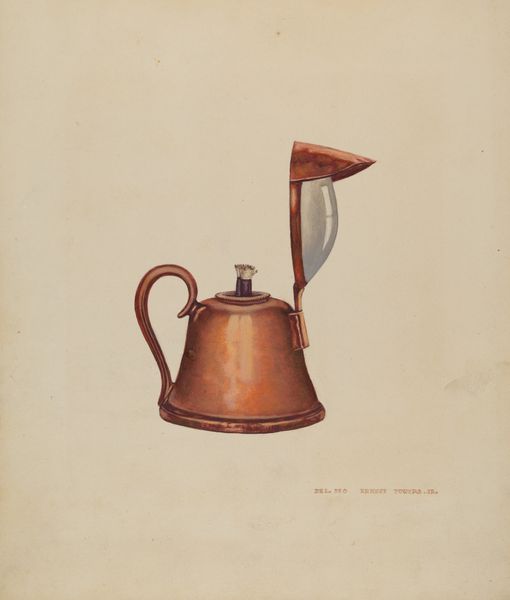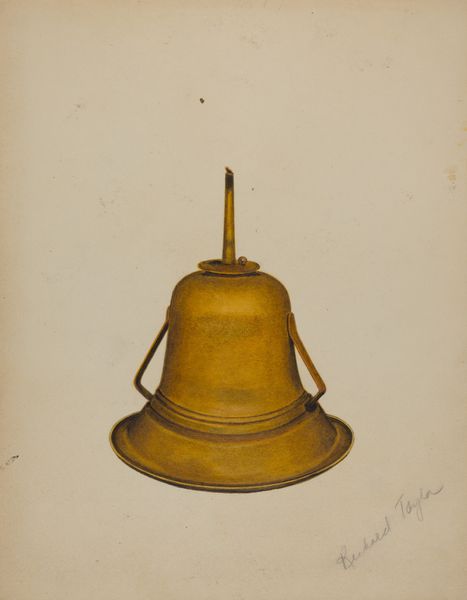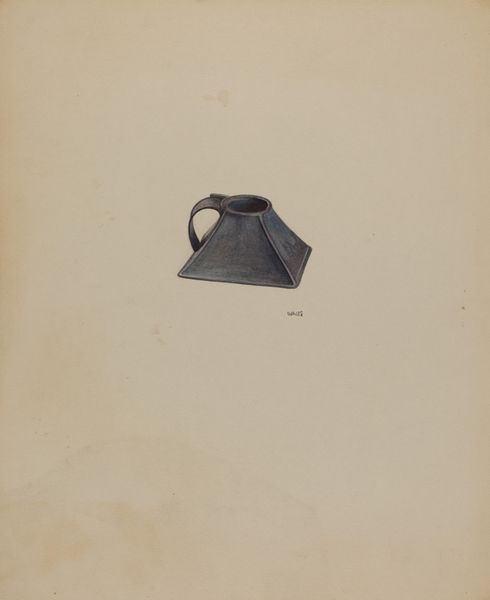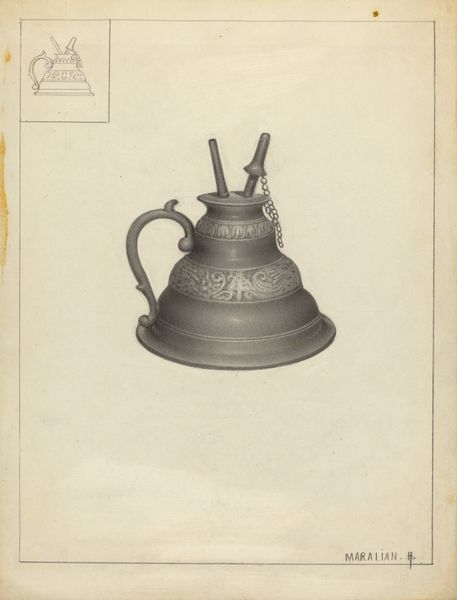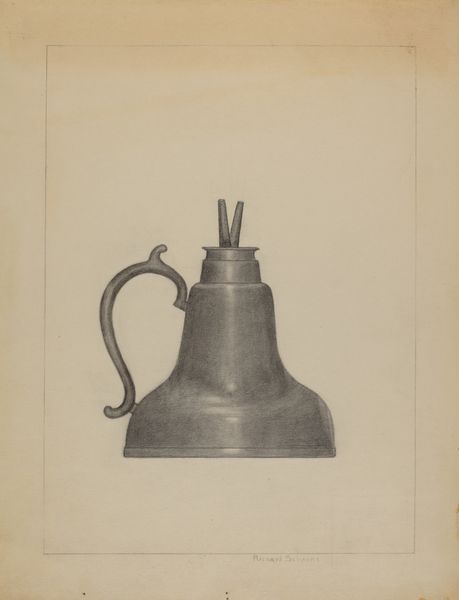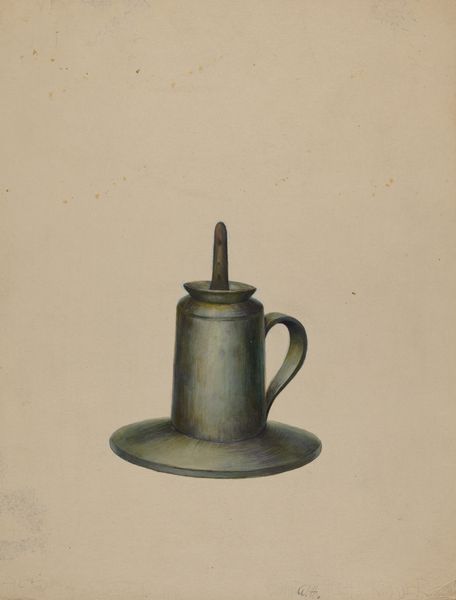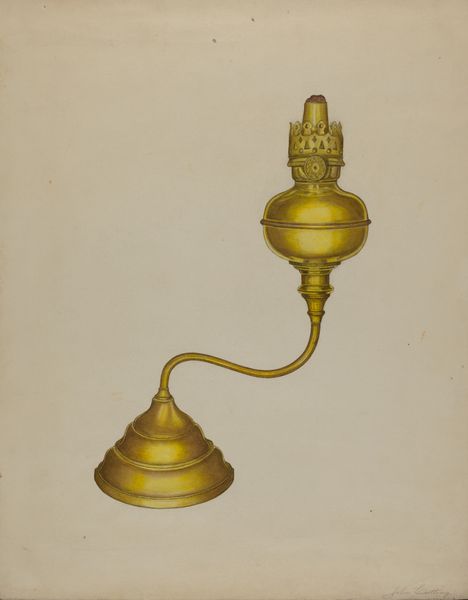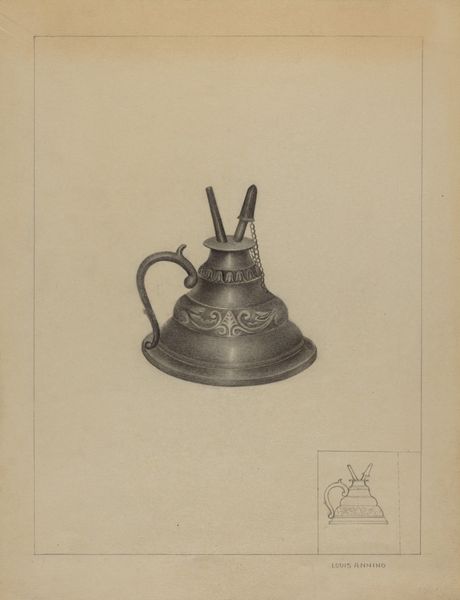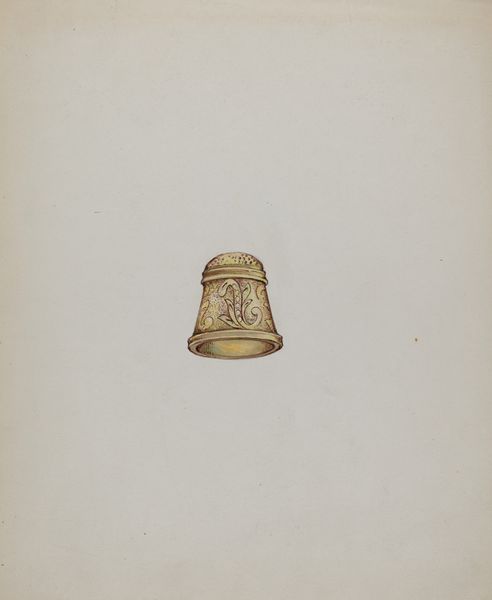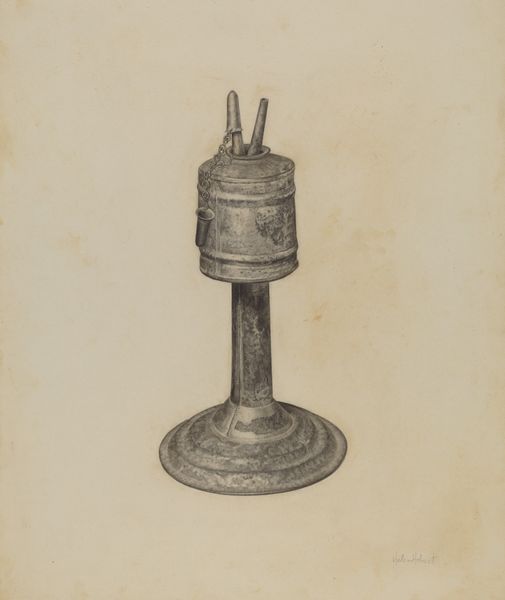
drawing, watercolor
#
drawing
#
water colours
#
watercolor
#
coloured pencil
#
watercolor
Dimensions: overall: 35.6 x 25 cm (14 x 9 13/16 in.)
Copyright: National Gallery of Art: CC0 1.0
Curator: The artwork before us, titled "Camphene Lamp," was created by Christabel Scrymser around 1940, utilizing watercolor and colored pencil. Editor: My immediate impression is that it's wonderfully melancholic. The muted golds and browns give it a sense of stillness, almost like a memory captured. Curator: Camphene lamps, fueled by a flammable mixture of turpentine, were popular before kerosene became widespread. So, in the 1940s when this was drawn, these lamps carried considerable symbolic meaning. They represent something of the past. They represent ingenuity and a transition away from older technologies like whale oil lamps, yet it isn't modern, even then. Editor: I agree. Looking at it through a gendered lens, camphene lamps often lit domestic spaces. In those eras women largely occupied and maintained the domestic space, so one can understand it representing a source of light in women’s spheres and lives. It's interesting to consider that these domestic spheres were both crucial for social reproduction, but also sometimes spaces of confinement. This lamp evokes a nuanced narrative of women's lives in the 1940s. Curator: The choice of medium, watercolor, softens the edges and imbues it with a certain transience, much like memory itself. I find it poignant that such a mundane object carries so much cultural weight. Light represents enlightenment, clarity, but also truth and revelation, as in spiritual experiences or enlightenment as is known through Buddhist beliefs. Editor: Indeed, and in an era of social upheaval with gender roles constantly being challenged, this lamp may represent, paradoxically, both progress and persistence, both domesticity and feminine energy. It may imply how some things change while others remain the same. Curator: It certainly makes me reflect on the complex layers embedded within even the simplest objects, their power to evoke collective narratives. Editor: Yes, it encourages us to consider art as an archive of social life and gendered history. A small yet revealing glimpse into our past.
Comments
No comments
Be the first to comment and join the conversation on the ultimate creative platform.

